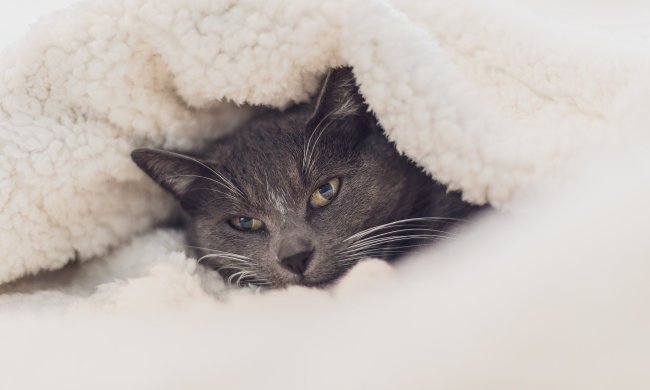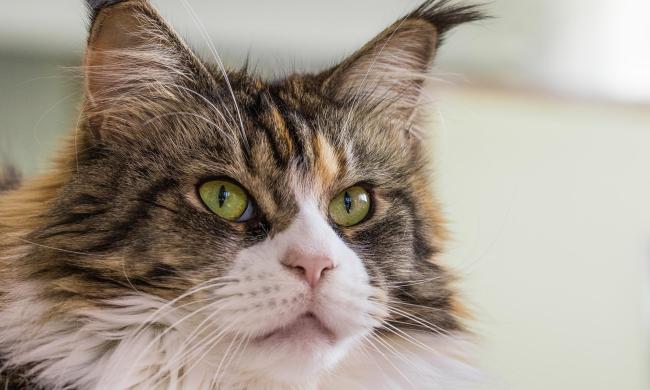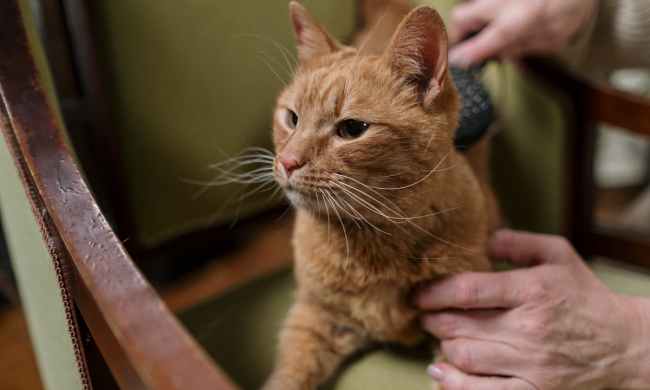Looking for a reason to brush your kitty’s teeth (beyond polishing that cute smile)? Cats can develop periodontal disease if plaque isn’t removed from their teeth and it hardens into tartar. Brushing your cat’s teeth can prevent gum disease, pain, the need for extractions, and expensive vet bills.
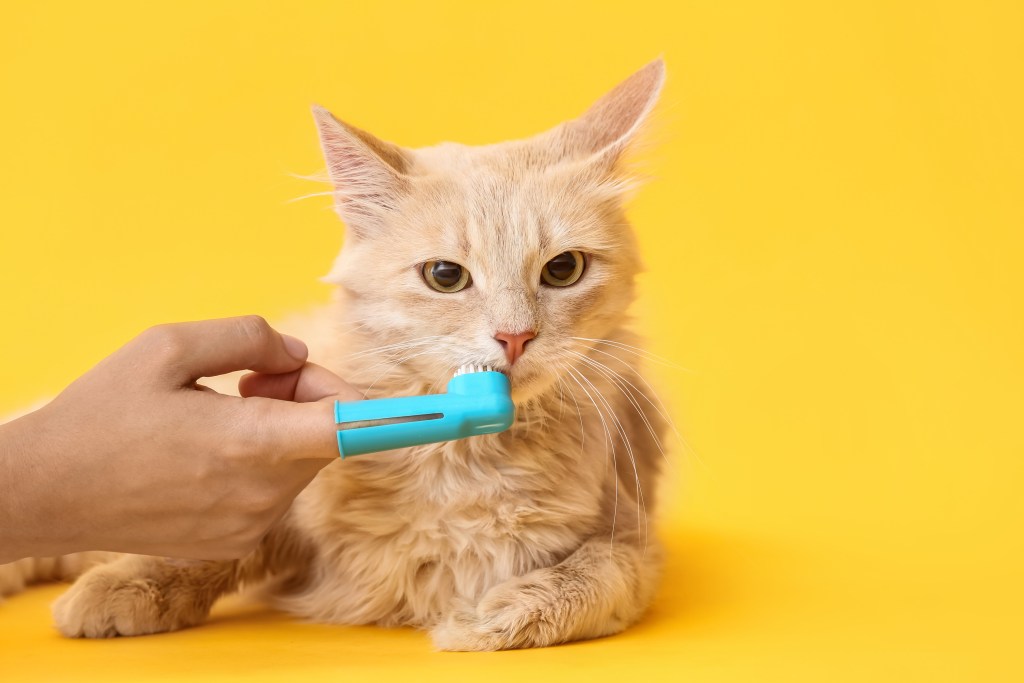
When should you brush your cat’s teeth?
Cats often find the feeling of having their teeth brushed unpleasant and frightening. The earlier you start brushing your pet’s teeth the better. A kitten will probably come to accept it as a normal routine. If you start brushing when your cat is older, it may be more of a struggle to keep her calm and get her to accept the new habit.
Ideally, you should brush your cat’s teeth every day. If that isn’t possible, aim for at least three times a week.
How can you introduce toothbrushing to your cat?
Follow these tips to make the process easier:
- It may be helpful to tilt your cat’s head back and move her gums to expose her teeth when you aren’t planning to brush them. Getting used to that can make teeth cleaning less stressful for your pet.
- When you’re ready to try brushing, find a quiet place where your cat feels safe. Close the door so your pet can’t run away if she gets scared.
- Select a position that will be comfortable for both you and your cat. You may want to set the cat on a table or counter, or she may feel safer on your lap. Place your cat with her back to you and hold her gently but firmly. You may want to wrap the cat in a towel or blanket or have someone help you hold her.
- Before you try using a toothbrush, let your pet get accustomed to having you put a cotton swab in her mouth and rub her teeth. Your cat will find that less intimidating than a toothbrush.
- Drain the water from a can of tuna and dip the cotton swab in the tuna water. Its pleasant taste will make the experience less stressful for your cat.
- Tip your cat’s head up at a 45-degree angle and pull back her lips to expose her teeth. You don’t have to open your cat’s mouth since you only need to clean the outer surfaces of her teeth. That’s where gum disease usually starts.
- Don’t try to do too much at once. Gently rub the cotton swab against as many teeth as you can, but back off if your cat gets anxious or aggressive. It may take several days, or even weeks, for your pet to feel comfortable with the experience.
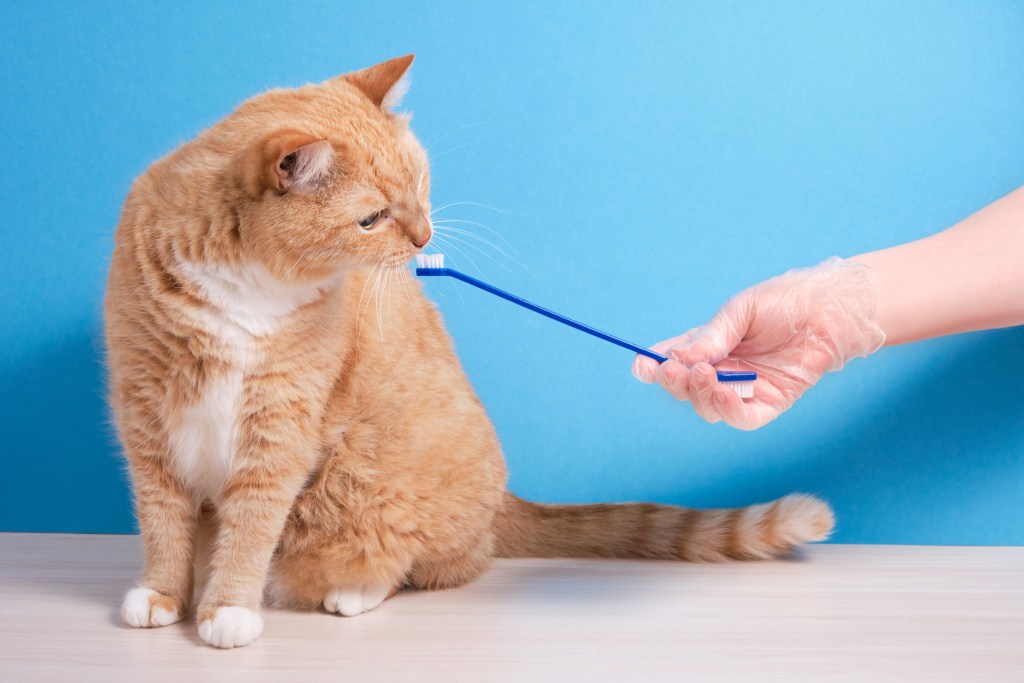
What type of toothbrush and toothpaste should you use?
Once your cat is comfortable with a cotton swab, you can move on to a toothbrush designed for cats. Find one that fits in your hand or over your finger. If you use a finger brush, be careful to avoid getting bitten. You can also use a toothbrush with extra-soft bristles designed for human babies. If your cat won’t tolerate any type of toothbrush, you can use small pieces of gauze.
Use a toothpaste formulated for cats. Toothpaste made for people contain ingredients cats shouldn’t swallow. Don’t use baking soda either because it can upset your pet’s stomach.
A toothpaste made for cats will have a taste that pets find appealing, which will make your cat more likely to cooperate, meaning less stress for you. You may want to try several flavors and see which one your kitty prefers. You can put some toothpaste on your hand and let your cat sniff and taste it before you try brushing with it.
How do you brush your cat’s teeth?
The procedure is essentially the same one you used to clean your cat’s teeth with a cotton swab. Put a small amount of toothpaste on the brush, tilt your cat’s head back at a 45-degree angle, pull back her lips, and gently brush the outsides of her teeth around the gumline in small, circular motions.
Your cat’s gums may bleed a little at first. If you brush regularly, her gums will become healthier, and the bleeding should stop.
Even if your cat was comfortable with having her teeth cleaned with a cotton swab, a toothbrush will feel different. Your pet may be anxious, and it may take several days for her to let you brush all her teeth.
How can you prevent the spread of bacteria?
Your cat’s mouth is filled with bacteria.Wearing gloves while you brush Kitty’s teeth will protect you from those bugs. If gloves interfere with the process too much, wash your hands with soap and water immediately before and after you finish cleaning your cat’s teeth.
Replace your cat’s toothbrush every few months, just like you replace your own. If you have multiple cats, buy each one a toothbrush so you don’t transfer bacteria from one animal to another.
Be patient with your pet
Cats are often frightened by unfamiliar experiences. That’s particularly true with older pets. Stay calm and know when to back off. Keep working at it, and gradually your cat will feel less stressed and be more compliant.
If you need more advice on how to brush cat teeth, contact your veterinarian. Even if you brush your cat’s teeth every day, you should still take her to the veterinarian for routine exams and cleanings.

